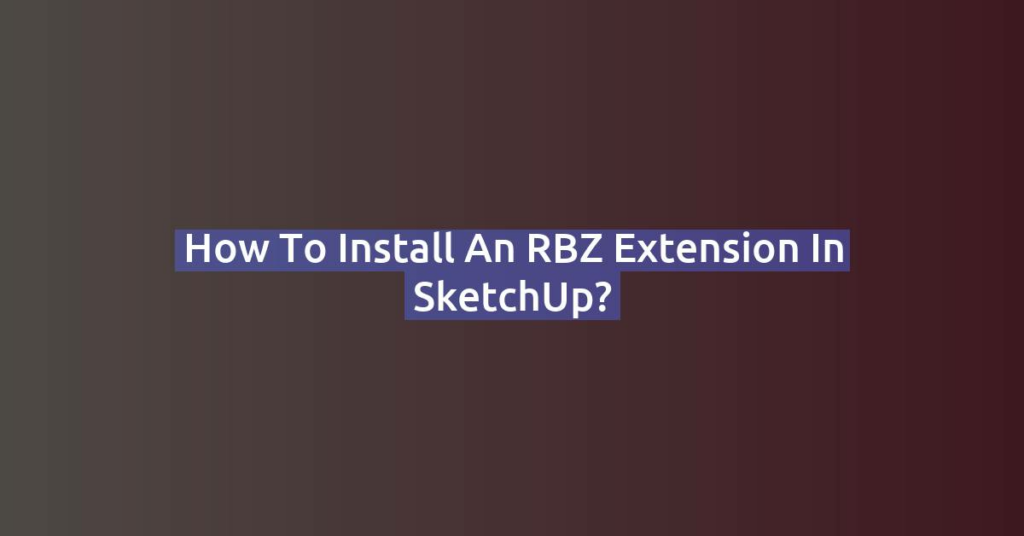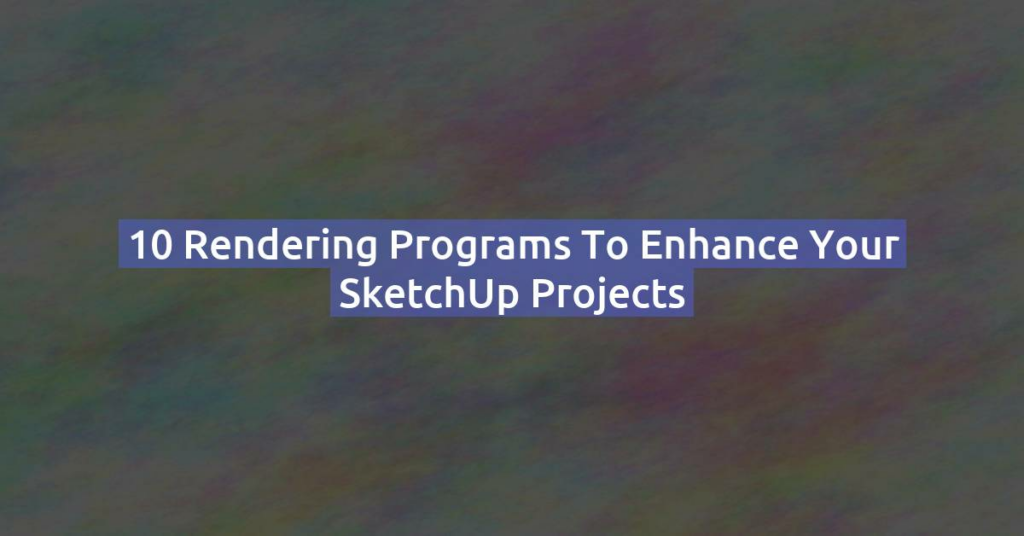The world of 3D modeling is evolving rapidly, and SketchUp continues to be at the forefront of this dynamic industry. As architects, designers, and creatives push the boundaries of what’s possible, SketchUp is adapting to meet new challenges and opportunities. In this post, we’ll explore the emerging trends in 3D modeling and predict how SketchUp will evolve to stay ahead of the curve. From AI integration to virtual reality and sustainability, the future of SketchUp is looking brighter than ever.
1. AI Integration: The Next Frontier in 3D Modeling
Artificial Intelligence (AI) is revolutionizing industries across the board, and 3D modeling is no exception. AI’s ability to analyze vast amounts of data and learn from it can significantly enhance the design process in SketchUp.
- Generative Design: AI-powered generative design allows architects and designers to input specific criteria, such as materials, spatial requirements, and environmental conditions, and then let the software generate multiple design solutions. SketchUp could integrate AI to offer automated design suggestions, optimize layouts, and even predict potential issues in real-time.
- Smart Automation: AI can automate repetitive tasks, such as generating complex geometry, optimizing models for performance, or even suggesting the best materials based on project parameters. As AI becomes more integrated into SketchUp, users can expect a more intuitive and efficient modeling experience, freeing them to focus on creativity.
- AI-Driven Rendering: Rendering engines are also benefiting from AI, with faster and more realistic results. Imagine a SketchUp plugin that uses AI to automatically set up lighting, camera angles, and materials, producing photorealistic renders in a fraction of the time.
2. Virtual Reality (VR) and Augmented Reality (AR): Immersive Design Experiences
Virtual Reality (VR) and Augmented Reality (AR) are transforming how we experience and interact with 3D models. These technologies offer immersive design experiences that allow clients and stakeholders to visualize projects in a way that 2D drawings and even 3D renders cannot match.
- Real-Time VR Walkthroughs: SketchUp is already compatible with VR platforms, enabling users to explore their models in a fully immersive environment. As VR technology advances, we can expect even more seamless integration with SketchUp, allowing for real-time collaboration and feedback in virtual spaces. Imagine walking through a building that hasn’t been constructed yet, making real-time changes as you go.
- AR for On-Site Visualization: Augmented Reality can overlay digital models onto real-world environments, providing a powerful tool for site analysis and client presentations. AR integration with SketchUp could allow architects to visualize how a building will look in its actual setting before construction begins, offering unprecedented accuracy in design decisions.
- Collaboration in Virtual Spaces: VR and AR also open new avenues for collaboration. Teams located in different parts of the world can meet in a virtual space, interact with the same model, and make decisions together, all within the SketchUp environment.
3. Sustainability: Designing for a Greener Future
As the global focus shifts towards sustainability, the role of 3D modeling software like SketchUp in promoting eco-friendly design practices is becoming increasingly important. The future of SketchUp will likely see enhanced tools and features aimed at helping architects and designers create more sustainable buildings.
- Energy Modeling and Analysis: One of the most significant trends in sustainable design is energy modeling, which allows designers to simulate a building’s energy performance. SketchUp could integrate more advanced energy modeling tools, providing users with insights into how their designs will perform in real-world conditions and suggesting improvements for energy efficiency.
- Material Impact Analysis: Another key aspect of sustainable design is understanding the environmental impact of building materials. Future versions of SketchUp might include databases that provide detailed information on the carbon footprint and lifecycle of different materials, helping designers make more informed choices.
- Designing for Circular Economy: As the construction industry moves towards a circular economy, where materials and resources are reused and recycled, SketchUp could incorporate tools that assist in designing buildings with disassembly and reuse in mind. This could include features for tracking material usage, optimizing for deconstruction, and integrating modular construction techniques.
4. Cloud Collaboration and BIM Integration
The future of 3D modeling is increasingly cloud-based, with collaboration and Building Information Modeling (BIM) integration becoming more critical for large-scale projects.
- Cloud-Based Collaboration: As remote work becomes more common, cloud-based collaboration tools are essential. SketchUp is likely to continue expanding its cloud capabilities, allowing multiple users to work on the same model simultaneously, regardless of location. This could also include more advanced version control, real-time updates, and cloud rendering.
- BIM Integration: While SketchUp has traditionally been seen as a more conceptual design tool, the future may see deeper integration with BIM workflows. This could involve better interoperability with software like Revit, more robust data management tools, and features that support the creation of detailed construction documentation directly within SketchUp.
5. Customization and Extensibility
As users demand more specialized tools, the future of SketchUp will likely involve even greater customization and extensibility.
- Custom Plugins and Extensions: SketchUp’s open-source nature allows for a wide range of plugins and extensions, which will only grow in importance. In the future, we can expect more advanced extensions that cater to niche markets, from landscape architecture to interior design, providing users with tools tailored to their specific needs.
- Scripting and Automation: For power users, scripting and automation will become increasingly important. SketchUp could introduce more user-friendly scripting tools or integrate with platforms like Python, allowing users to automate complex workflows and create custom tools without deep programming knowledge.
Conclusion
The future of SketchUp is poised to be as innovative and dynamic as the industry it serves. With advancements in AI, VR/AR, sustainability, cloud collaboration, and customization, SketchUp will continue to evolve, offering powerful new tools that empower designers and architects to push the boundaries of what’s possible. As these trends unfold, staying ahead of the curve will be crucial for professionals looking to make the most of this ever-evolving software.
Are you ready for the future of SketchUp? Stay tuned to our blog for more insights, updates, and tips to help you navigate the exciting developments in 3D modeling.



